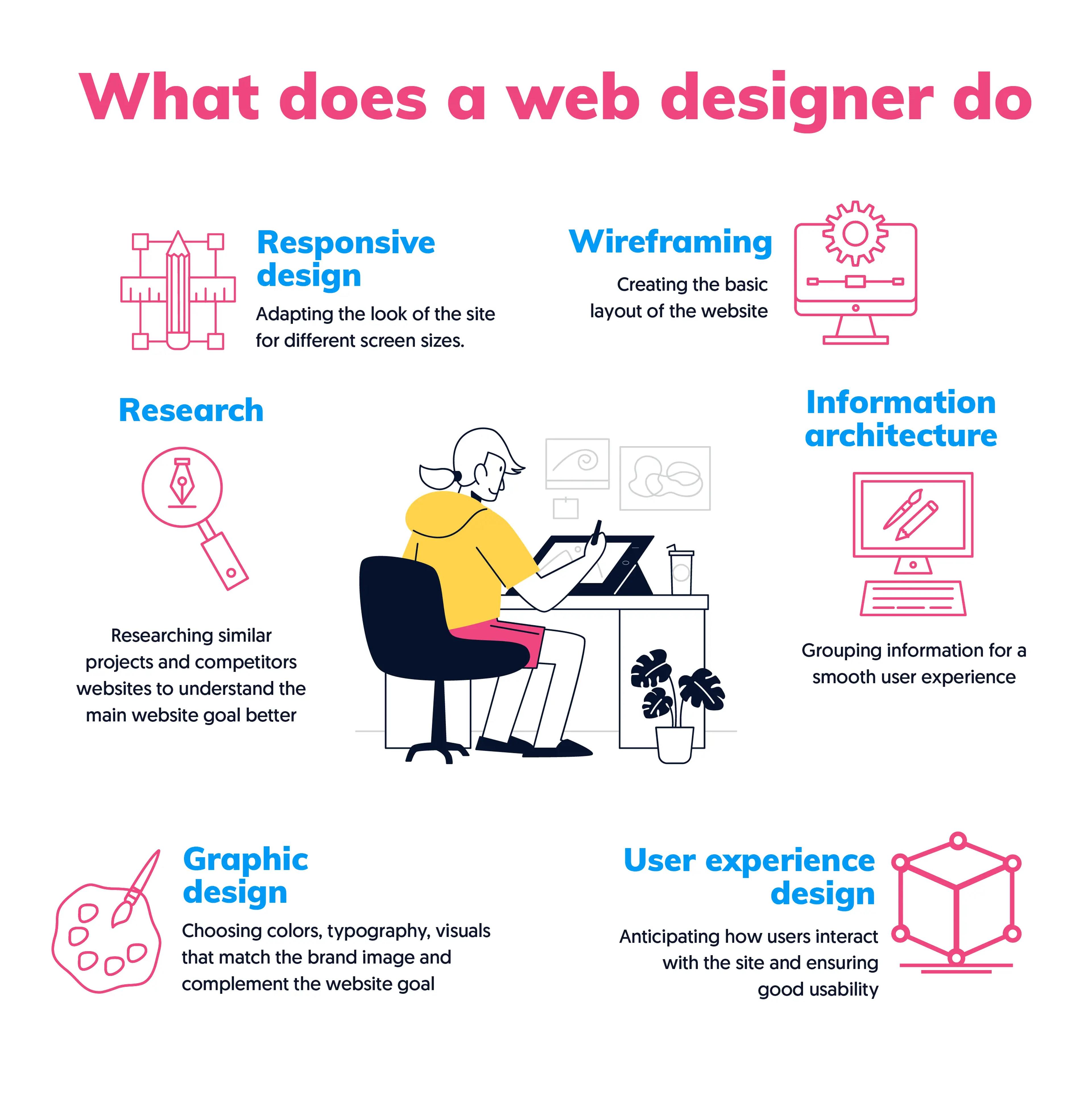Imaginative Website Design Solutions for Modern and Engaging Sites
In the realm of web design, the quest of modern-day and interesting options has actually ended up being increasingly vital for organizations aiming to record individual attention. By incorporating bold shade systems, interactive aspects, and receptive formats, developers can create experiences that not only reverberate with individuals but likewise enhance brand identity.
Welcoming Strong Color Pattern
In web style, the strategic use bold shade systems can substantially boost customer involvement and brand name identification. By using vivid colors, designers can develop visually striking websites that record interest and cultivate an unforgettable experience. A well-chosen color combination not just reflects a company's worths however additionally evokes specific emotions that can influence individual habits.
Vibrant colors can be used to assist users' focus to key components such as contact us to activity, improving conversion prices. For example, utilizing contrasting shades for buttons and web links can make these aspects stand out, motivating users to communicate even more conveniently. A natural shade plan across the site strengthens brand name acknowledgment, developing a feeling of experience and trust fund amongst site visitors.
Nonetheless, it is essential to balance bold shades with sufficient white room to avoid frustrating users. Reliable use of typography also complements vibrant colors, making sure readability while maintaining aesthetic allure. Ultimately, accepting vibrant color schemes in internet design not only elevates visual quality but also plays an important role in accomplishing tactical service goals, making it an important factor to consider for contemporary web development.

Using Interactive Aspects
Interactive components are crucial in modern web layout, as they substantially enhance user engagement and produce an extra vibrant surfing experience. By integrating attributes such as animations, float impacts, and clickable aspects, internet sites can urge customers to explore web content much more completely and return for future check outs.

Micro-interactions, such as refined animations when a button is clicked or a form is submitted, can additionally enhance the individual experience by providing immediate feedback. These small details can make the site feel more receptive and to life, cultivating a sense of connection in between customers and the website.
Additionally, gamification aspects, such as rewards for finishing details actions, can motivate customers to involve with the web content more deeply. By attentively integrating these interactive parts, web designers can produce a remarkable and engaging on-line experience that resonates with customers and urges them to return.
Implementing Responsive Design
Carrying out responsive layout is critical in today's multi-device landscape, making sure that websites give an optimal viewing experience throughout different display sizes. As users significantly access the web through smart devices, tablet computers, and desktops, a one-size-fits-all method is no more viable. Responsive design permits for smooth navigating and communication, adapting format and web content to fit the device being made use of.
Trick concepts of receptive design include fluid grids, adaptable photos, and media queries. Media queries assist in the application of various styles based on the device's features, such as width, elevation, or resolution, enabling developers to tailor the user experience effectively.
Additionally, receptive design boosts search engine optimization performance, as online search engine favor mobile-friendly sites. By applying responsive layout, services not Find Out More only improve user complete satisfaction and involvement however likewise boost their reach in an affordable digital landscape. As innovation proceeds to progress, embracing responsive design has ended up being a fundamental method for any type of contemporary and engaging internet site.
Incorporating Multimedia Content
Multimedia material plays a vital duty in developing appealing and dynamic web experiences that catch customers' attention and boost understanding. By integrating message, images, sound, and video, web sites can offer a richer narrative that charms to numerous discovering designs and choices. This assimilation not only reinforces customer involvement yet likewise help in sharing complex concepts succinctly.
Incorporating top notch images and infographics can separate textual material, making it a lot more absorbable. Video tutorials and presentations link can provide extensive understandings that fixed content may not totally connect. Audio elements, such as podcasts or history music, can likewise improve the environment of a website, creating an extra immersive experience.
Furthermore, the tactical use multimedia can boost search engine optimization efficiency, as online search engine prefer diverse material kinds, increasing exposure. It is important to ensure that multimedia components do not prevent page lots times, as this can lead to individual stress. By stabilizing multimedia integration with efficiency considerations, web designers can create aesthetically appealing and functional sites that resonate with individuals, promoting a deeper connection and motivating return check outs.
Focusing On Individual Experience

To achieve an ideal individual experience, designers have to focus on a number of essential principles. First, receptive design is necessary; web sites ought to adapt perfectly to different tools and display sizes. This availability makes certain that individuals can involve with material despite their selected system. Clarity in format and hierarchy is vital. Clear contact us to action, legible typography, and arranged content overview users, lowering cognitive load.
Furthermore, integrating individual comments right into the design process is important. Normal screening with actual customers aids determine discomfort points and locations for renovation, permitting for iterative improvements. Eventually, focusing on UX not only raises customer contentment however additionally drives involvement and conversion rates, making it an important component of modern-day website design approaches. By placing individuals at the center of style efforts, internet sites can develop long-term, positive impacts that encourage return check outs.
Final Thought
In conclusion, check here modern-day web style options that emphasize bold shade schemes, interactive aspects, responsive layout, and multimedia material considerably boost user interaction and complete satisfaction. las vegas seo. Prioritizing customer experience via clear designs and continuous comments additionally adds to improved conversion rates.